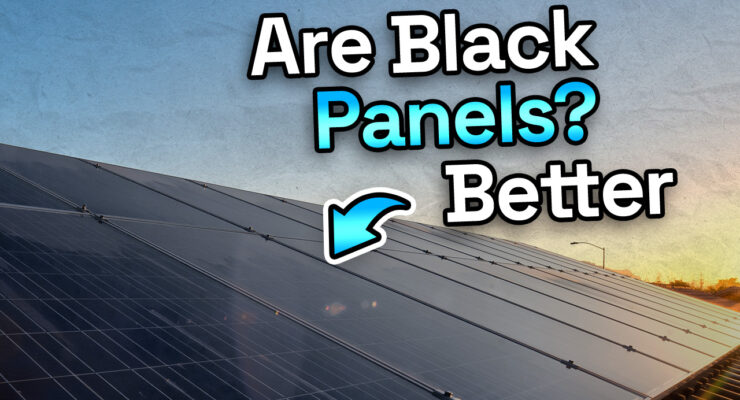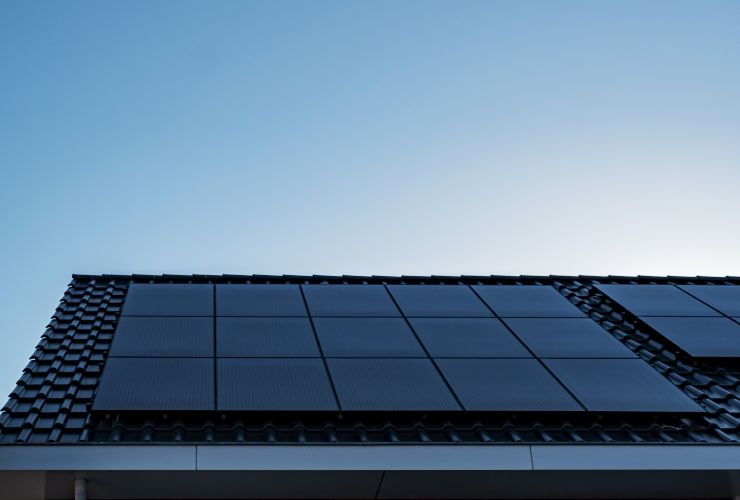
Fast read
Owners of solar panels frequently choose black panels because they complement roofs more visually. While they could be slightly more expensive than blue solar panels, they can boost the home's aesthetic.
However, black panels may become hotter in the summer, which could cause a little more than a 1% reduction in output. Despite this, the advantages of utilising black panels, such as enhanced aesthetics, can exceed the modest output drop. To find the right panels for your home, you should consult with a local expert. Additionally, consider factors such as your location, the condition of your roof, and your budget.
Do black solar panels on your roof look better?
Many people regard their house to be their most valuable asset. As a result, any increase in its value is welcome. A good solar system and battery can raise property value by producing electricity.
This does not mean that an unsightly solar array will not impact the home’s appeal and value. Solar panels are attractive to some individuals but can be unappealing to others. Your next question might be ‘What about black solar panels?’
Your installer might use techniques to make the solar panels less noticeable from the ground. Your installer may employ methods to make the solar panels less visible from the ground. One approach to enhance the appearance of your system is to utilise all-black solar panels.
The panels have black cells and a black frame design. You can combine these with black rails and clamps to achieve a black design which is aesthetically pleasing.
Black panels use monocrystalline cell technology with a black backing sheet, while blue solar cells are used in polycrystalline panels.
From conversations with clients and installers, many agree that black solar panels look better. This is especially true if your roof is dark, but full black solar panels can look stunning even on light-coloured roofs. Please explore with your installer if they can supply total black panels and rails to your home.

Caution notice
One note of caution, sometimes solar demand ebbs and flows, meaning product supply is plentiful one month and tight the next month. Getting solar panels in Australia can be more complicated than in Europe and may require waiting.
Black rails and panels cost slightly more, but not thousands, just a few hundred dollars for a standard 6.6kW solar system.
Despite all these positives, full black panels have a small downside compared to standard panels. The disadvantage is that these panels can get slightly hotter in summer than the standard ones. The hotter the panel is over 25 degrees Celsius, the less it will perform to the ideal power output.
We’re discussing reducing less than 1% of the output, mainly in summer when renewable energy production is highest. Therefore, one would discuss less than $50 in lost yearly income on a standard system.
So should I get black solar panels on my roof?
Absolutely, the aesthetic appeal of solar panels is a valid concern for many homeowners. Saving $2,000 a year on electricity is tempting, but badly positioned or ugly panels can discourage people. However, this is precisely where black solar panels can be a game-changer.
Black solar panels are a fantastic solution for those who prioritise both energy efficiency and aesthetics. Black solar panels look good on different roofs and buildings, making them a popular choice for homes.
Picking a reliable solar installer is crucial to ensure that adding solar panels enhances your home’s appearance. A trusted installer can provide advice on the placement and installation of panels. This advice will help to maintain the appearance of your property and maximise energy production.
Hiring an expert allows you to discuss various options and find the most suitable panels. These panels not only generate the most energy but also match the aesthetic of your home. This way, you can achieve the dual benefits of significant electricity savings and an aesthetically pleasing solar energy system.
Moreover, the advancements in solar technology have led to more options in colours, designs, and configurations. This allows homeowners to choose from a range of panel styles that better integrate with their property’s overall look.